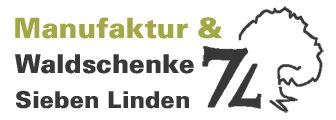What Is Blockchain Technology? » Explained
For all its potential, blockchain has yet to become the game changer some expected. And can companies still use blockchain to build efficiency, increase security, and create value? Hybrid blockchains combine elements of both public and private networks. They feature selective transparency, which allows blockchain admins to restrict specific parts of the blockchain to certain participant pools while maintaining public visibility over the rest of the thread. This way, organizations are entitled to a certain level of privacy when immutably sharing data independent of a third party. Embracing an IBM Blockchain solution is the fastest way to blockchain success.
Energy consumption concerns
Its first traces, however, go all the way back to the 1970s, when computer scientist Ralph Merkle patented Hash trees, also known as Merkle trees, that makes cryptographic linking between blocks of stored data possible. In logistics, blockchain acts as a track-and-trace tool that follows the movement of goods through the supply chain. The transparent system offers users real-time visibility of their shipments, from manufacturing to delivery. These insights help compile data, determine faster routes, remove unnecessary middlemen and even defend against cyberattack interference. Aside from saving paper, blockchain enables reliable cross-team communication, reduces bottlenecks and errors while streamlining overall operations.
So when a transaction is taking place among two peers, all nodes take part in validating the transaction using consensus mechanisms. These built-in protocols keep all in-network nodes in agreement on a single data set. No blocks can be added to the blockchain until it is verified and has reached consensus. Luckily, this step has been sped up with the advent of smart contracts, which are self-executing programs coded into a blockchain that automate the verification process. In the past decade, blockchain technology has transitioned from a pioneering promise to a valuable utility that brings meaningful benefits to its many users around the world.
A blockchain network can track orders, payments, accounts, production and much more. And because members share a single view of the truth, you can see all details of a transaction end to end, giving you greater confidence, and new efficiencies and opportunities. A number of companies are active in this space providing services for compliant tokenization, private STOs, and public STOs. Using encryption adds another layer of security to the entire process on the blockchain network. All the blocks contain a unique hash of their own and the hash of the previous block. Due to this property, the blocks are cryptographically linked with each other.
- Every record is updated simultaneously and the updations propagate quickly in the network.
- Blockchain technology is a decentralized, distributed ledger that stores the record of ownership of digital assets.
- Even if a computer on the network were to make a computational mistake, the error would only be made to one copy of the blockchain and not be accepted by the rest of the network.
- Here In this article, we will discuss the features of blockchain technology and how they make it a revolutionary and highly desirable platform for various applications.
- In a consortium blockchain, a group of organizations come together to create and operate the blockchain, rather than a single entity.
Transaction Process
He is one of the principal investigators of the MIT Digital Currency Study, which gave all MIT undergraduate students access to bitcoin in Fall 2014. His work has been featured in Nature, the New York Times, the Wall Street Journal, the Economist, WIRED, NPR, Forbes, Bloomberg, the Chicago Tribune, the Boston Globe, and VICE analytical crm News, among others. The blockchain simply records every transaction that has ever taken place on its network. For example, the Ethereum blockchain is a record of all ether transactions that have ever taken place. So if there are updates that need to be made around a previous transaction, rather than going back to the initial data, a new record is made about the change.
What the FTX Trial Means for the Future of Cryptocurrency
In addition to reducing human error, their function is to facilitate decentralization and create a trustless environment by replacing third-party intermediaries. Combining public information with a system of checks-and-balances helps the blockchain maintain integrity and creates trust among users. Essentially, blockchains can be thought of as the scalability of trust via technology. As how to buy bitcoin in china the top-ranked blockchain services provider, IBM Blockchain Services have the expertise to help you build powerful solutions, based on the best technology. More than 1,600 blockchain experts use insights from 100+ live networks to help you build and grow.
Imagine you typed some information into a document on your computer and sent it through a program that gave you a string of numbers and letters (called hashing, with the string called a hash). You add this hash to the beginning of another document and type information into it. Again, you use the program to create a hash, which you add to the following document. Each hash is a representation of the previous document, which creates a chain of encoded documents that cannot be altered without changing the hash. This network of programs compares each document with the ones they have stored and accepts them as valid based on the hashes they generate.
Blockchains can serve as a way to track and verify ownership of assets via NFTs that represent ownership of in-game digital items and collectibles. Players can tap into a global liquidity pool and trade in-game assets at decentralized avatrade reviews comments and ratings marketplaces while maintaining full custody over them, enabling fully community-owned blockchain games. With the potential of interoperable blockchain games and the metaverse, players might be able to trade in-game assets between different games in the future. Blockchains can act as a middleware to ensure two or more enterprise databases have matching records without putting their sensitive internal data on a public blockchain. The data is stored using a privacy technique known as a zero-knowledge proof (ZKP) where only parties in the agreement have the context to understand its meaning. The proof serves as a common frame of reference for the state of the business process; e.g. the current terms of a volume discount agreement between a seller and buyer.


